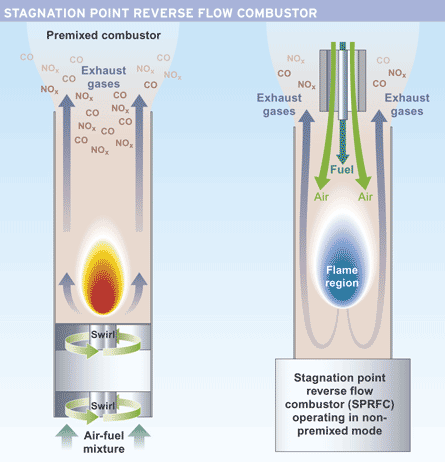By Rob Coppinger in London
A combustor said to achieve emissions so low that they are “close to theoretical limits” has been developed under a NASA contract by the US Georgia Institute of Technology.
Called the Stagnation Point Reverse Flow Combustor, it burns fuel with nitrogen oxide emissions below 1 part per million (ppm) and carbon monoxide emissions lower than 10ppm. The tests were conducted at ambient atmospheric pressures and the next stage will be to test the combustor at 30 atmospheres to emulate jet engine environments. The project leader, Georgia Tech Guggenheim School of Aerospace Engineering Regent’s Professor Ben Zinn, says: “The results are increasingly promising. It is almost close to the theoretical limit people are predicting.”

While in conventional combustors reactants enter one side and exhaust gases leave on the other, the Georgia Tech device has reactants and exhaust gases entering and leaving by the same side. This means the exhaust gases, which are moving to exit along the walls of the combustor, contribute to the heating and ignition of the reactants entering the combustor.
Existing combustors premix fuel with swirling airflow before injection. This requires complex designs and the process can cause instabilities, reducing combustion effectiveness.
The project’s goal was to develop a low-emissions combustor for aircraft engines and power-generating gas turbines. The research began in 2001 and has cost several hundred thousand dollars, paid for by the NASA University Research Engineering Technology Institute’s Center on Aeropropulsion and Power and Georgia Tech itself.
Source: Flight International



















